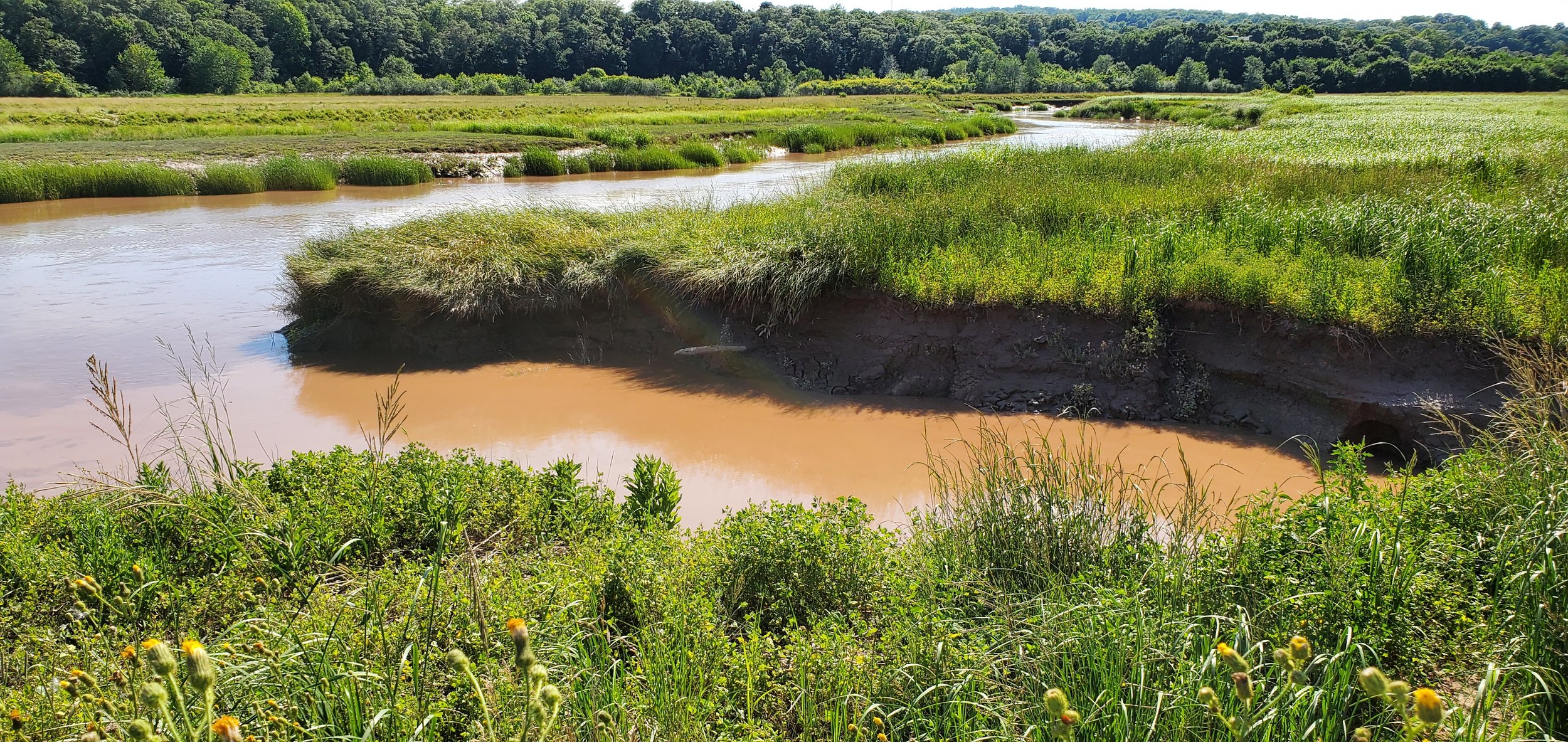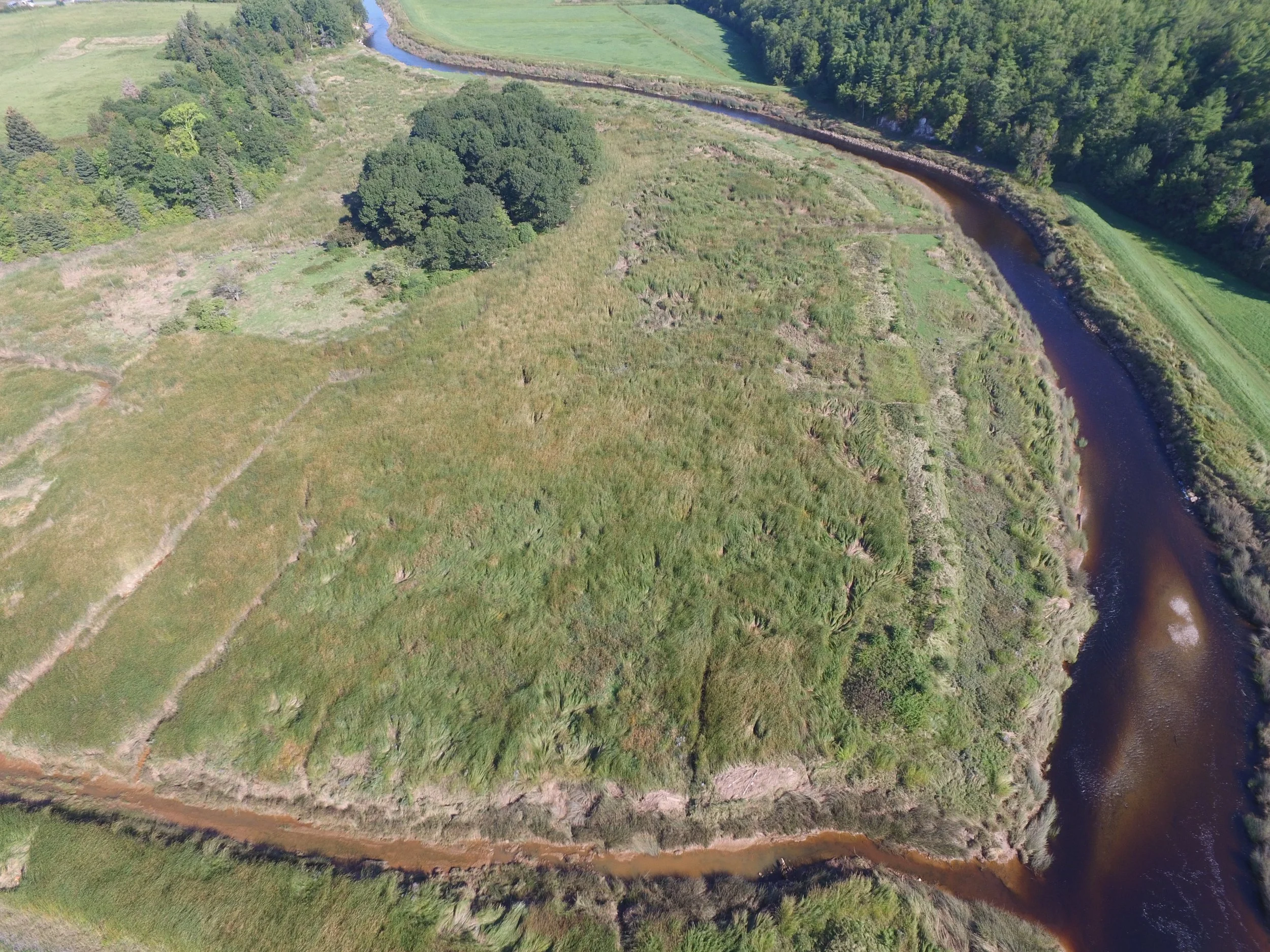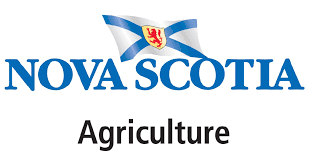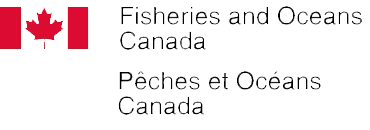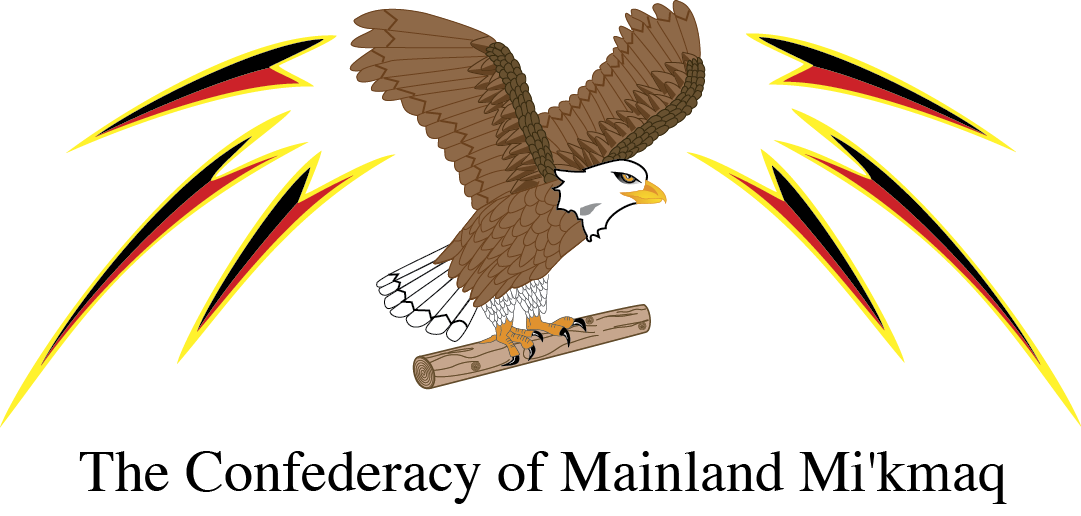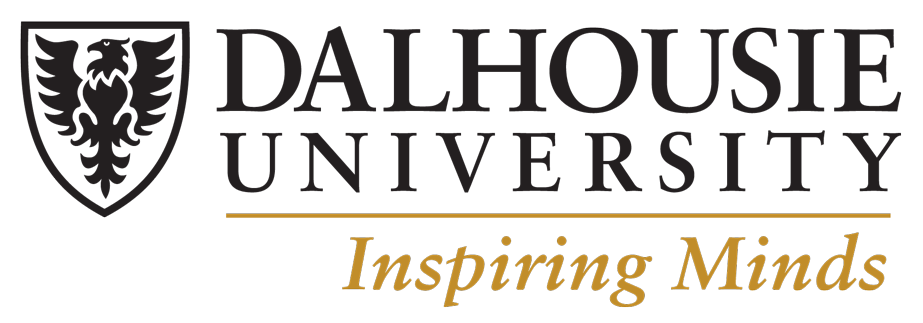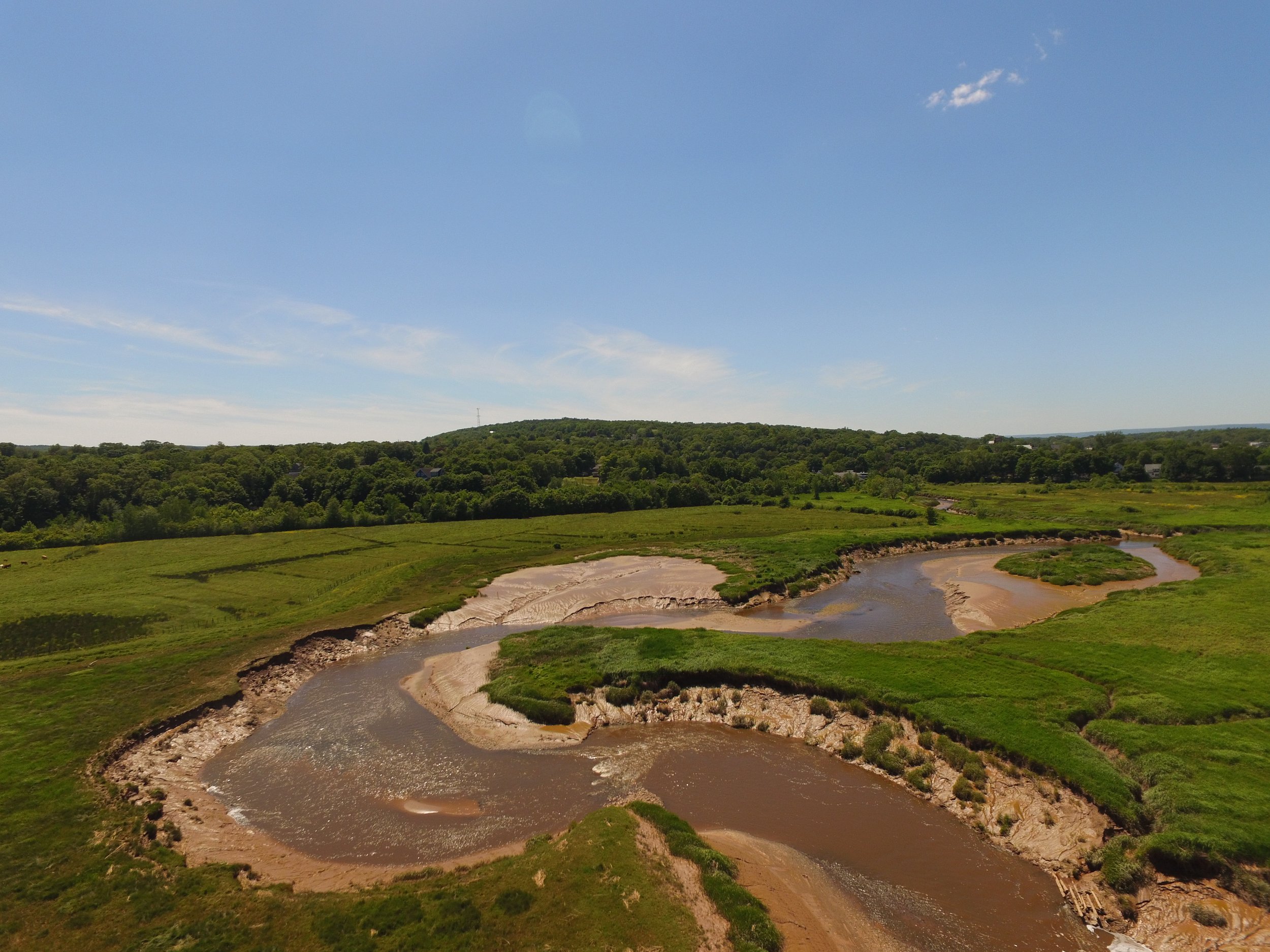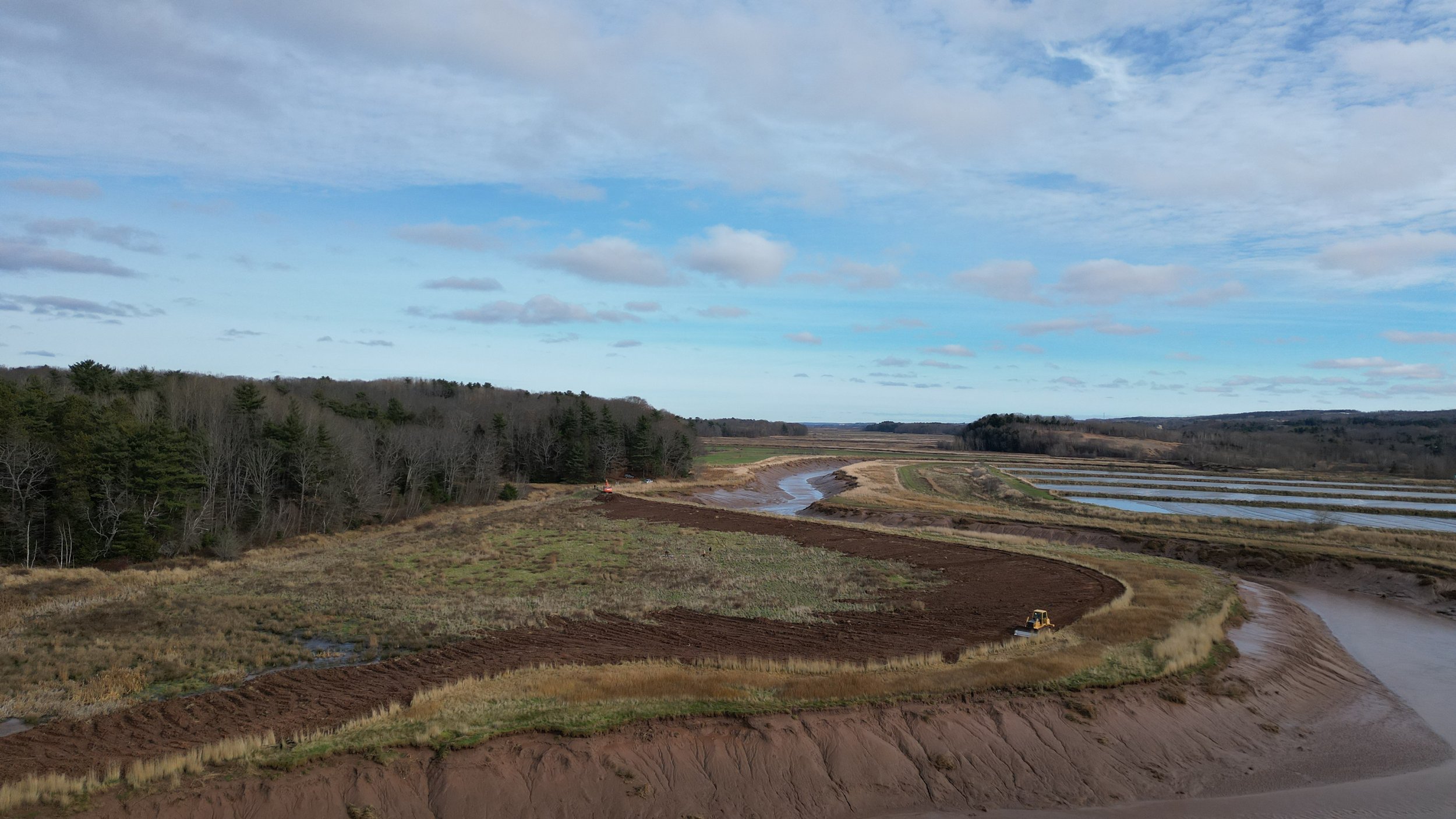Realigning Dykes to Increase Resilience of Dykeland Communities
Making Room for Wetlands (MRFW) is a climate change adaptation and restoration project focused on increasing resiliency in dykeland communities. One way of increasing resiliency is by re-establishing tidal wetlands where they historically would have been. The Making Room for Wetlands project works to reduce flooding in surrounding communities, create vital habitat, store carbon and reduce other greenhouse gas emissions.
Carbon Sequestration
is the process of capturing and storing atmospheric carbon dioxide.
Tidal wetlands form the first line of defense during severe storm events by absorbing large amounts of water and dampening wave energy. Healthy tidal wetlands are highly productive ecosystems that provide critical habitat for a variety of species. They also have a large capacity for carbon storage, which helps to mitigate climate change.
Most of these ecosystems have been lost in Nova Scotia due to dyking, coastal development, and tidal barriers like causeways. By realigning, or breaching, sections of existing dykes and restoring natural hydrology and habitats, we can better protect our coastal infrastructure in the face of climate change.
Dykeland Systems in Nova Scotia
The dykeland system of Nova Scotia protects agricultural lands, communities, and public infrastructure throughout the province, but the system is at risk of damage from climate change. The Nova Scotia Department of Agriculture (NSDA) is currently working to upgrade some of the most vulnerable sites in the province. While not an option at every site, managed dyke realignment and tidal wetland restoration is an important tool in the dykeland upgrade toolkit. To learn more about the NS Dykeland System Upgrades, visit the Nova Scotia Department of Agriculture website.
Making Room for Wetlands
Making Room for Wetlands projects implement a framework for managed dyke realignment and tidal wetland restoration.
Making Room for Wetlands centres a nature-based approach, providing room for the natural dynamic movement of the coast. To learn more about managing the coastal impacts of climate change through nature-based solutions, visit the Making Room for Movement project page.
The project team will work closely with the NSDA to identify sites for Making Room for Wetlands applications. Sites will be chosen based on the vulnerability of the existing dykes and will ensure minimal impact to landowners and users. It is important to note that this project aims to improve the resiliency of agriculture and that re-aligned dykes will provide a more efficient dyke configuration, while providing more protection to the future impacts of climate change and sea level rise. Dyke breaches are only considered if the land behind the dyke is fallow and/or maintaining the dyke system is deemed untenable. Focusing on sites where dykes can no longer be maintained allows us to implement nature-based solutions to address climate change risks.
Etuaptmumk/Two-eyed Seeing
“Two-Eyed Seeing refers to learning to see from one eye with the strengths of Indigenous ways of knowing and from the other eye with the strengths of Western ways of knowing and to using both of these eyes together.”
When assessing and monitoring our sites, our team works to identify, recognize, and respect the cultural and historical value of the sites that we work on to the Mi’kmaq people. We also recognize the importance and value of Mi’kmaw traditional ecological knowledge and ways of knowing. The ongoing MRFW projects are committed to continuing to develop the existing partnership with the Confederacy of Mainland Mi’kmaq (CMM), and working towards a more holistic approach to managed dyke realignment and tidal wetland restoration.
The St. Croix and Coastal Carbon Editions will weave in Mi’kmaq traditional ecological knowledge and ways of knowing to existing mainstream frameworks. By working to look at our work through with a Two-eyed Seeing lens, we hope to enhance the success of tidal wetland restoration efforts.
Netukulimk: “taking what you need now and saving something for later”
St. Croix Edition
The Making Room for Wetlands: St. Croix Edition will apply the successful MRFW managed dyke realignment and tidal wetland restoration framework to a stretch of the St. Croix River Estuary in the Upper Bay of Fundy, Nova Scotia.
The newly restored tidal wetland areas would be added to 18.1 hectares of wetland previously restored by NS Public Works, CB Wetlands and Environmental Specialists Inc (CBWES), and Saint Mary’s University in 2009.
This project will provide critical habitat to support populations of the plamu/Atlantic Salmon, punamu/Atlantic Tomcod and ka’t/American eel (culturally significant species to the Mi’kmaq), and other fish species. The restored wetlands will also provide climate change mitigation and adaptation effects to surrounding communities, by increasing carbon sequestration, reducing Greenhouse Gas (GHG) emissions and reducing the risk of flooding in surrounding communities by accommodating increased tide levels and river discharge. Re-aligned sections of dyke will provide increased protection to the impacts of climate change and sea level rise.
The Making Room for Wetlands: St. Croix Edition is funded by the DFO – Aquatic Ecosystems Restoration Fund (DFO-AERF) and is a partnership between TCA at Saint Mary’s University, CBWES, NSDA and the CMM.
Coastal Carbon Edition
Making Room for Wetlands: Coastal Carbon Edition will employ the MRFW managed dyke realignment and tidal wetland restoration framework at dykeland sites in the Bay of Fundy.
This climate change adaptation and restoration project will reduce GHG emissions and increase carbon storage by both increasing the area of tidal wetlands through restoration, and improving drainage on poorly drained agricultural lands. The project will also increase biodiversity and improve the resilience of the surrounding dykelands to climate change by accommodating sea-level rise and reducing flood and erosion risk.
The Making Room for Wetlands: Coastal Carbon Edition is funded by the Environment and Climate Change Canada – Nature Smart Climate Solutions Fund (ECCC-NSCSF) and is a partnership between TCA at Saint Mary’s University, CBWES, NSDA and the CMM, as well as NS Public Works, NS Environment and Climate Change, and Carleton University.
First edition
The first edition of Making Room for Wetlands (2017-2022) is funded by the Department of Fisheries and Ocean’s Coastal Restoration Fund.
This initial project has resulted in the development of the Making Room for Wetlands managed dyke realignment and wetland restoration framework, through multidisciplinary partnerships with:
Governmental organizations
Academic institutions
Non-governmental organizations
Mi’kmaq organizations
Contractors and;
Landowners.
Work has so far resulted in the restoration of 30.1 ha of tidal wetland at 3 sites: Converse Marsh, Belcher Street Marsh and Ksu’ksw Mqoqt/Hemlock Marsh. In order to ensure the success of each project restoration site, Saint Mary’s University and CB Wetlands & Environmental Specialists (CBWES) follow a rigorous process of pre- and post-construction monitoring.
Click the images below to learn more about the tidal wetlands restored through Making Room for Wetlands:
Increased Technical Capacity
The Making Room for Wetlands has allowed TransCoastal Adaptations to increase our team’s technical capacity. You can learn more about the labs involved with TCA, the services we provide, and check out some technical videos below.
Remotely Piloted Aircraft Systems (RPAS)
Sontek M9 (Riversurveyor and Hydrosurveyor)
Webinar Recordings
We have hosted and participated in workshops and webinars, sharing our best practices, innovations and lesson learned in our managed dyke realignment and tidal wetland restoration projects. Click the links below to watch the event recordings.



